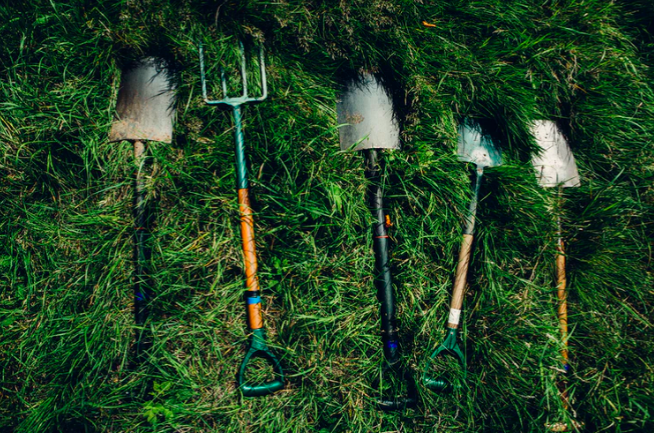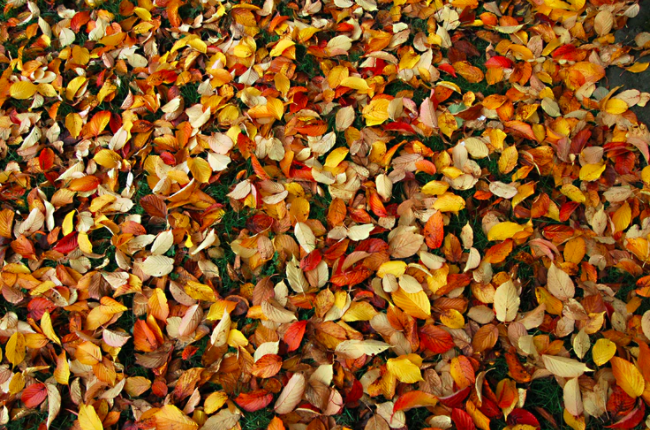Sofia is a passionate writer from Sydney. She also enjoys decorating houses and engaging in home renovation projects. That is why she loves sharing her experience and advice with other people through her writing. Besides this, she loves technology and gadgets which can help us get through a busy workday. Twitter: https://twitter.com/sofilockhart
During the colder months, venturing outside might not make it onto your list of priorities, especially if it’s only for a spot of gardening. The truth is that this thinking might prevent you from taking advantage of the best time of the year for gardening repairs, and it doesn’t even need to require a significant investment of time. In fact, with a few simple tricks up your sleeves, you can keep your garden in great condition throughout even the toughest months of the year.
Fix the bare patches in your grass
If lawn maintenance has been on your to-do list for a while, autumn is a great time to tackle it. Why? This is the least productive time for weed seeds, which means new grass seedlings have the best possible chance to become well-established. Before fixing the bare patches, though, you should take the time to work out the cause of the problem – otherwise, you may find the repairs to be a futile exercise. Different species of grass will react differently to the same conditions, so it would be wise to research the type of grass you currently have and compare it with other varieties on the market.
Go deep to remove invasive weeds
You might have planned and prepared to seed, water, and grow a beautiful green lawn, but any invasive weeds in your garden are sure to have other plans. Although weed removal sounds simple in theory, completing the process effectively requires significant patience and care. If the weeds are pulled out too quickly or with too much force, they can break, allowing the weed to continue growing until it is finally removed from the source.

Looking for a garden service?
Choose your plants well
When it comes time to choose a few new plants for your autumn and winter garden, look no further than spring-blooming bulbs. These are hardy enough to grow in a range of soil conditions, provided they have enough separation to get adequate nutrients from the soil. The good news is that creating this separation is a surprisingly simple process – all you need to do is dig into the soil at a point approximately 4 inches from the plant’s stalk to loosen the soil, then gently remove and separate the bulblets. Tender bulbs may not fare as well against reduced soil temperatures, so if you live in a particularly cold winter climate, you should consider digging them up for preservation. These troupers will survive in a breathable container for several months as long as the bulbs are separated.
Clean your tools
Gardening tools tend to spend more time confined to the shed during the autumn and winter months, creating a great opportunity to give them some well-deserved attention. Proper care is important to keep your tools in good condition and maximise their lifespan – plus clean tools also do a better job at keeping the garden in great shape since they won’t spread any nasty diseases amongst your plants. After gardening, spray your blades with rubbing alcohol and wipe it off, and you’ll be able to look forward to a beautiful, disease-free garden.

Improve your soil with organic compost
Organic compost takes time to produce, but the results can do wonderful things for your garden. If you already have a compost bin filled with organic material from summer, the beginning of autumn is a great time to lay it on thick as it will nourish your soil in preparation for spring. If, on the other hand, you are starting from scratch, a blend of leaves, straw, sawdust and even kitchen scraps will make a very effective compost mix. You can even add dead vegetable plants, as long as they show no signs of disease. A classic set-and-forget regime, this is one of the easiest ways to improve the health of your garden.
Make leafmould
Like a classic garden mulch, leafmould can do amazing things for the nutrient content of your soil and the health of your plants. This process is just another clever way to up-cycle organic matter back into the soil, and all you need is some wire mesh, wooden stakes, and a shaded spot in your garden. The process of making leafmould is as simple as filling your makeshift bin with old leaves, sprinkling it with water, and leaving it to develop – very similar to composting. Once the leaves begin to crumble, you’ll know it’s ready to be spread over the garden, but you might have to be patient – this process can take a few years.

Getting out into the garden might not sound like a whole lot of fun once the temperatures start to fall, but there’s no better time of the year to get your gloves on. The fact remains that practising simple garden maintenance through autumn and winter will save you from putting in a great deal of extra work to repair the situation a few months down the track.






